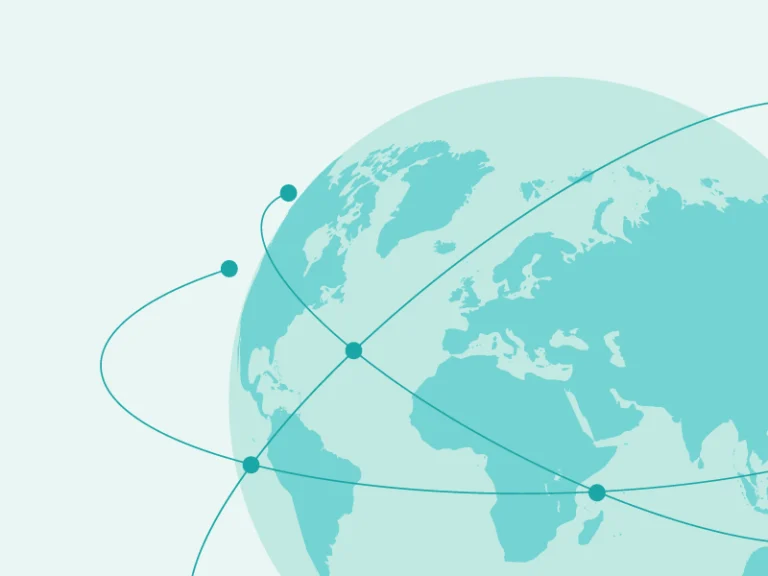Ecommerce is a growing market globally with predictions showing that it will increase to 35.4% market share in the next 12 months. With the leading categories being electronics, clothing and homeware, ecommerce retailers, therefore, are well placed to take advantage of this growth – especially if they can both reach new shoppers and encourage repeat shopping by providing excellent ecommerce delivery.
6 Ways for Ecommerce Retailers to Provide Best in Class Delivery:
- Clear delivery and return policies
- Tracking options
- In-flight changes
- Signature delivery
- Offer Free shipping
- Provide alternate delivery options
Ecommerce is a rapidly growing opportunity
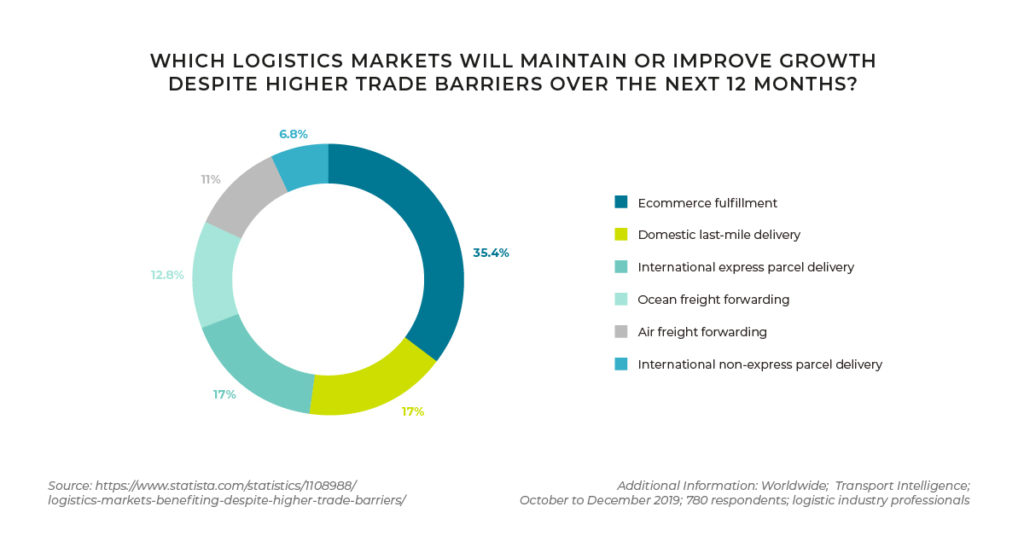
While shipping and delivery are the final touchpoints on the shopper journey (excluding returns), given that both happen post-conversion – when retailers may think that their relationship with the customer is secure – poor execution can adversely affect future conversion and brand loyalty. Shoppers have shown that they won’t return to retailers where they have had a bad delivery (or returns) experience.
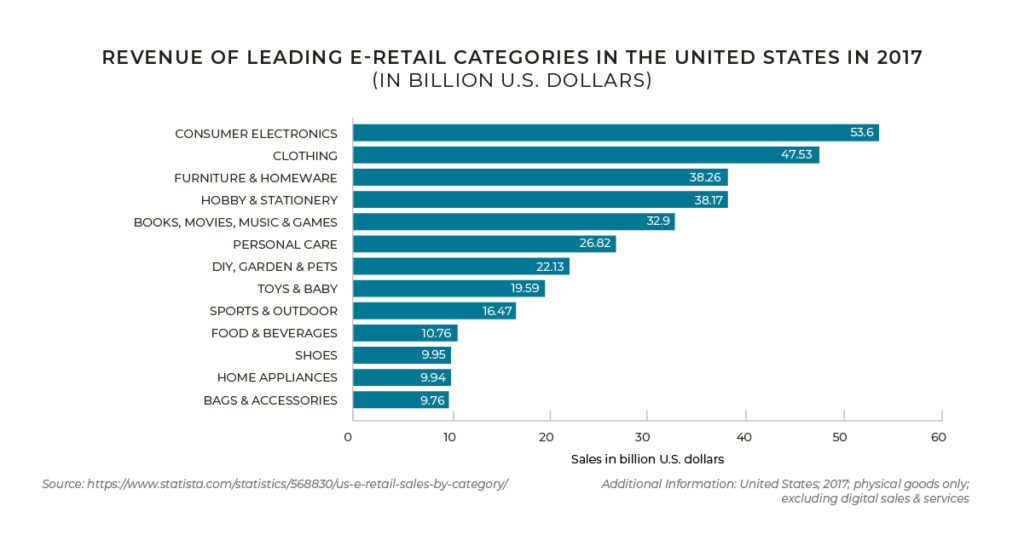
Parcel volumes increasing year on year
Online shopping and particularly cross-border online shopping is becoming increasingly popular, leading to increased parcel delivery for retailers. Ecommerce retailers will need to provide best in class delivery for customers as order numbers increase, as shoppers rarely return to retailers following a bad delivery experience.
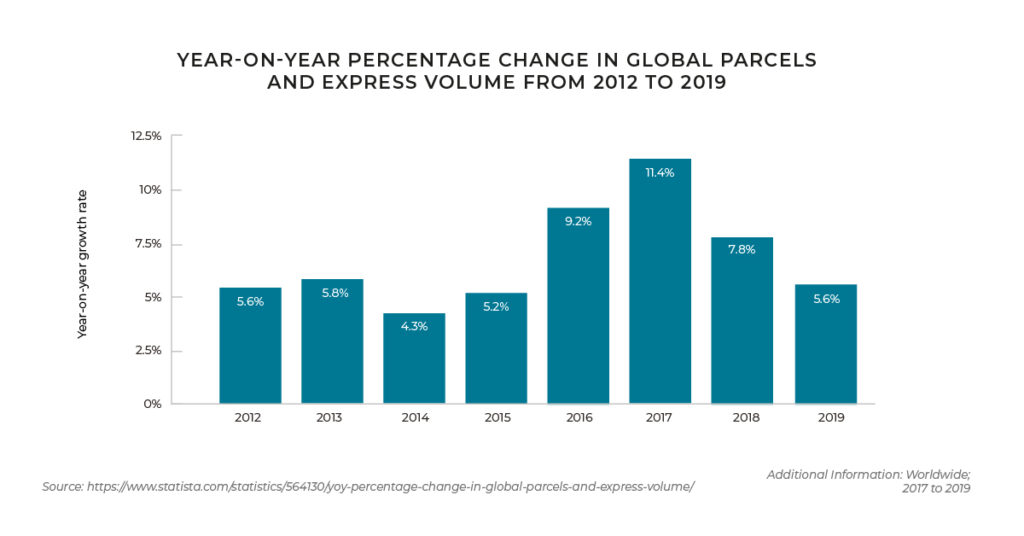
Shoppers have high expectations regarding speed of delivery and specificity of delivery dates, with 40% of online shoppers saying they would not finish an online purchase if delivery takes longer than two days, or is expensive. While international shoppers are more understanding of longer delivery times and are willing to pay for shipping, they still will abandon a cart due to unclear delivery policies or high shipping or returns costs.
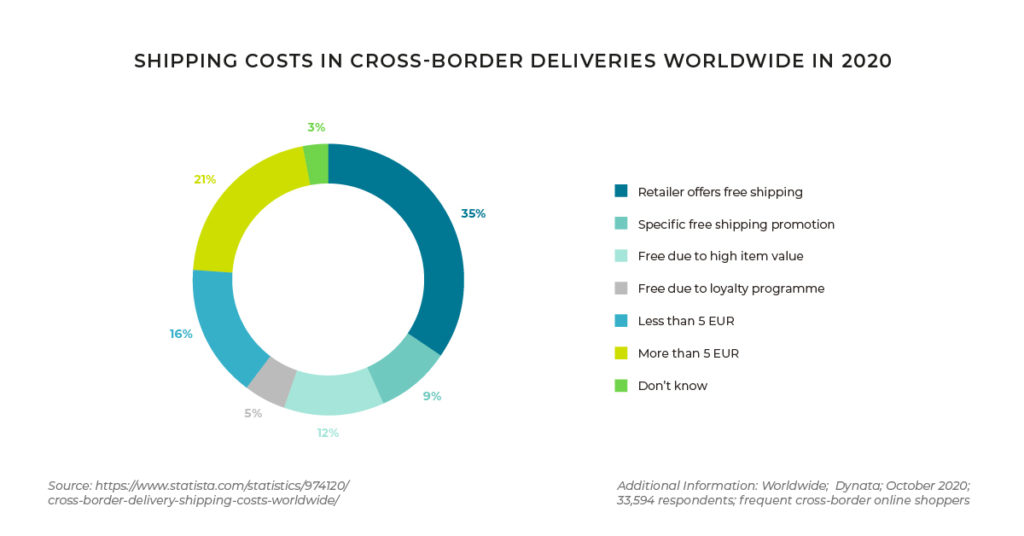
Barriers to purchase
A key barrier to conversion for consumers is retailers not offering free shipping (outlined further in the ‘free shipping’ section below). However, other reasons include unclear returns policies, slow delivery – with 44% of US online shoppers stating in a recent survey that they had abandoned an order because it wouldn’t arrive by the date they require it – or unclear delivery dates, with 20% saying they didn’t even place the order because of unclear delivery dates.
Partnering with the right final mile carrier
Choosing the right final mile carriers and providing options to the shopper that meet their needs is key, but these have cost implications that the retailer needs to be aware of. Shoppers want a range of options from retailers and a final mile partner will be instrumental in providing these.
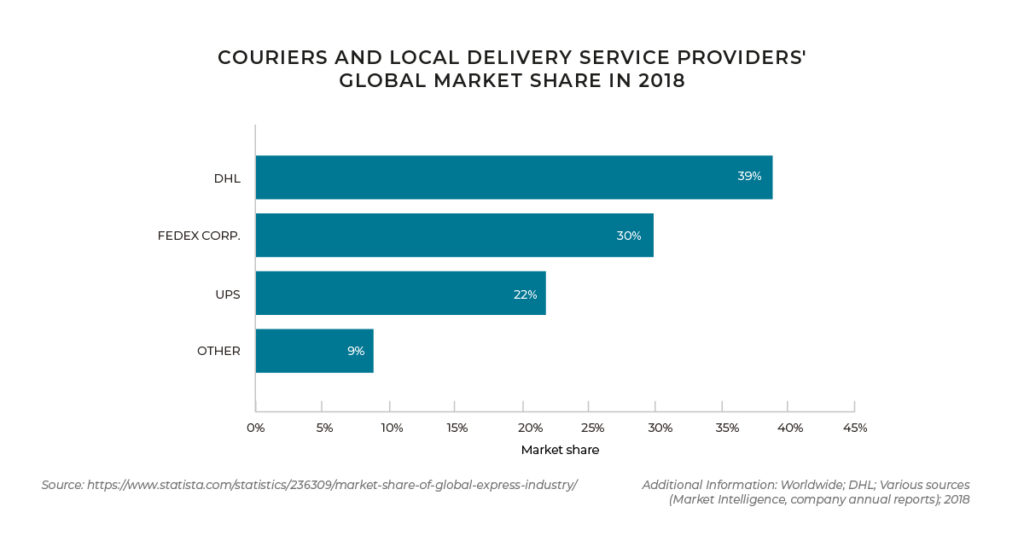
Some factors to consider when selecting a final mile carrier include whether they provide a range of delivery methods (outlined in ‘Providing alternative delivery options’ section below), in-flight tracking – where shoppers can change their delivery time or location mid-way through delivery – and have a good reputation for both working with retailers and customer satisfaction.
Global delivery market is dominated by three key players, unsurprisingly DHL, FedEx and UPS but there is still a significant percentage of the market covered by other final mile carriers (9%).
Cost of shipping to retailers
There are cost implications to shipping and delivery that retailers must be aware of but providing best in class shipping and delivery is essential to an excellent shopper experience, which is what all ecommerce retailers need to be aiming for.

Shipping costs averaged US$10.1 in 2018. While that is a substantial cost, offering free shipping and returns results in great shopper conversion rates. In fact, 63% of females and 53% of males said they would shop online more if they received free shipping and returns. This provides a dilemma that the retailer needs to resolve – do they chase higher conversion or profitability on individual orders. Finding the balance between these two is where the greatest success comes.
If free shipping is not an option, offering delivery incentives such as reduced shipping or free shipping over a certain threshold of spend will incentivize customers to convert or even spend more in order to avail of threshold-reliant free shipping.
How to provide best in class delivery to shoppers
Here are six examples of delivery considerations for international ecommerce retailers to excel at delivery:
- Clear delivery and return policies
- Tracking options
- In-flight changes
- Signature delivery
- Free shipping
- Provide alternate delivery options
Clear delivery and return policies
Have a clear delivery and returns policy with all relevant information included both on the website and in any documentation shoppers receive in order to minimize confusion, reach out to customer service, and complaints. Doing so will increase brand loyalty and customer retention.
Tracking options
While shoppers prefer transparency around delivery and the ability to be able to track the package, tracking packages is a more costly option for the retailer. However, the benefits of tracking are fewer lost packages and fewer calls to customer services.
In-flight changes
In-flight changes refer to when a customer can change delivery details when their delivery is en-route. It is an excellent experience to offer shoppers, as they might not be where they thought they would be a given delivery date.
Signature delivery
As with all other options, there are pros and cons for offering signature delivery. On the one hand, there is more peace of mind for the retailer if they know the shopper has signed for the delivery. But it can cause its own complications if a shopper isn’t home or wants to designate someone else to sign.
Free shipping
Retailers must weigh up the benefits of free shipping versus the cost of providing same. 68% of US shoppers said they abandon the purchase at least half the time if shipping isn’t free.
Provide alternative delivery options

Shoppers like to have options when deciding what delivery method suits them best, usually at a time and location that they can dictate. There are a variety of delivery alternatives for retailers to choose from and provide to shoppers – and deciding which one to provide will depend on factors both within and outside of the retailers’ control.
If an ecommerce retailer doesn’t have a brick and mortar store in a country or area, this prohibits them from providing ‘Buy Online, Pick Up in Store’ for example – but that doesn’t mean there aren’t numerous methods retailers can avail of.
Here is a selection for retailers to consider:
Buy Online, Pick up In-Store (BOPIS)
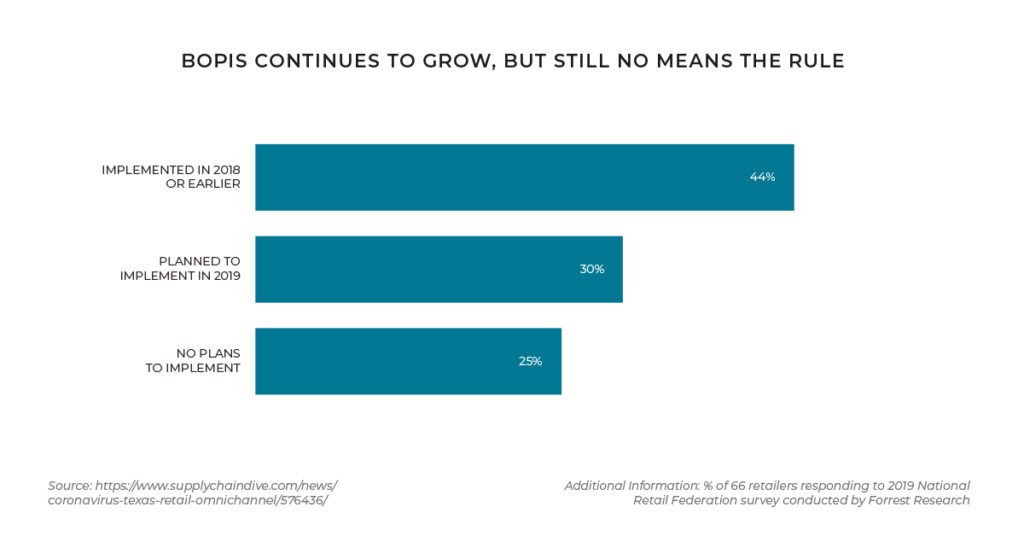
Buy Online, Pick up In-Store (BOPIS) is when shoppers pick up their goods from a store having ordered online.
From a retailers’ perspective, it’s an excellent option if there is a brick and mortar store in the area as it’s less costly to the retailer as the items could already be in-store, saving on delivery altogether, or retailers can aggregate packages and delivery, therefore being a less costly delivery option, as well as more environmentally friendly and secure for shoppers. Additionally, it gets online shoppers in-store where they may buy additional items.
Retailers in the US have seen a marked uptick in sales from implementing BOPIS – much more than expected, with one store, Big Lot, achieving profitability ahead of projections in 2019. Discount stores such as Big Lot don’t tend to offer ecommerce options so its success with offering shopping online could be an incentive to other similar retailers to consider the benefits of adding online into the mix. According to Forrester as of March 2019, 44% of a survey of 69 retailers have implemented BOPIS and an additional 30% had plans to do so.
Pick up, drop off (PUDO)
A ‘pick up, drop off’ delivery option is where there is a designated area for shoppers to receive or leave parcels and can range from local newsagents to unmanned lockers.
This can be a convenient option for both retailers and shoppers. Retailers can combine delivery and know they’re leaving the parcels in a secure place, and shoppers can have their packages delivered to a convenient location where they don’t have to be available to sign for them. Similarly, return is easier for both retailers and shoppers as once again the shopper has a convenient drop off point and the retailer can bundle returns, thus decreasing the cost of collection and return shipping. There can be a cost to this option, which the retailer can choose to bear or pass on to the shopper.
Cash on Delivery
Some regions such as Russia are used to paying in cash and it is still a preferred method for shoppers.
Cash on Delivery refers to collecting payment at the door since the shopper can choose to pay in actual cash.
Some global markets are not widely banked and the economy runs on cash payments. Brands that offer cash payment options reach more customers in more markets.
Try before you buy
‘Try before you buy’ lets shoppers order and take delivery of items like clothes or shoes without paying. If the shopper keeps items, they are charged or can pay via an app or online. If the shopper does not like the items, they can return product within a certain time frame and not pay for the items they did not keep.
The benefit of this method is that shoppers only pay for what they keep. Furthermore, they don’t pay in advance, and don’t have to wait on refunds from the retailer. All of which makes for an excellent shopping experience.
Conclusion
The effects of a global pandemic are being played out all across the world at the time of writing. The effects are touching nearly every person and business globally, and there are lessons to be learned for ecommerce retailers. As retailers grapple with supply chain impacts, store closings or production issues they have to learn to pivot quickly.
Moving into a more settled period, brands can learn from these pivots. They can create processes and supply chains that aren’t so reliant on one element. They can consider partnerships with final mile carriers that allow retailers to quickly move to different shipping lanes if necessary. Creating more responsive, agile frameworks means that retailers can quickly respond with minimum production, delivery or revenue impact.
Find out more about how ESW can help your ecommerce business provide excellent solutions for your shoppers. Reach out to our Sales team.





